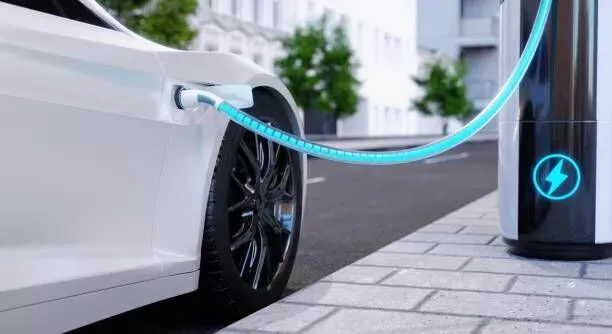Notifications

7 minutes, 32 seconds
-23 Views 0 Comments 0 Likes 0 Reviews

Understanding DC Fast Charging: When and Why to Use It
As electric vehicles (EVs) become increasingly mainstream, the demand for quicker and more convenient charging options continues to rise. While Level 1 and Level 2 chargers are sufficient for daily use, they can fall short in time-sensitive or long-distance situations. That’s where DC fast charging makes a major difference. Designed to deliver direct current (DC) directly to the EV battery, this method dramatically cuts down charging time.
So, when should you opt for DC fast charging—and how does it actually work? Let’s break it down.
DC fast charging bypasses your EV’s onboard charger, sending electricity straight to the battery in the form of direct current. In contrast, AC (alternating current) charging requires your EV to convert the incoming current, which slows the process. With DC fast chargers, the conversion takes place at the station itself, allowing for significantly faster charging.
DC fast chargers maintain constant communication with the vehicle to adjust the power flow based on what the battery can handle. Several factors influence the charging rate:
Charging curve
Battery acceptance rate
Charger’s maximum output
DC fast charging stations range from 15 kW to 350 kW, with megawatt-scale chargers (1,000 kW) under development. However, a higher kW doesn’t automatically mean faster charging—your EV’s battery must be able to accept that power.
When you plug in, your EV charges rapidly at first—until about 80% state of charge (SOC). After that, the rate slows significantly to protect the battery and free up charging stations for others. This is why most manufacturers recommend stopping at 80% during fast charging.
Here’s how different power outputs affect the number of miles added per hour:
| Power Output | Approximate Miles Gained per Hour |
|---|---|
| 30 kW | 87 miles/hour |
| 50 kW | 145 miles/hour |
| 100 kW | 289 miles/hour |
| 120 kW | 347 miles/hour |
| 150 kW | 434 miles/hour |
| 180 kW | 520 miles/hour |
| 250 kW | 723 miles/hour |
| 350 kW | 1012 miles/hour |
Note: Speeds vary by vehicle model and battery capacity.
Level 1 and Level 2 chargers use AC power, making them compatible with typical household and workplace outlets. They're ideal for overnight or long-term charging. But when speed is a priority, DC fast charging is the go-to.
Here are the best scenarios for using DC fast chargers:
Battery Between 20% and 80% SOC:
This range ensures the most efficient and battery-friendly charging experience.
Avoid Starting Below 10% SOC:
Charging from a very low battery level frequently can accelerate degradation.
Long Road Trips:
Need to cover long distances quickly? Fast chargers reduce downtime and keep you moving.
Emergencies:
When you're running low and need a quick boost to reach the next destination.
| Feature | AC Charging | DC Fast Charging |
|---|---|---|
| Power Type | Alternating Current (AC) | Direct Current (DC) |
| Conversion | Handled by onboard system | Handled at charging station |
| Charging Speed | Slower | Faster |
| Best Use Case | Home/workplace charging | Public/highway charging |
Several elements can impact how fast and effectively your EV charges:
Battery Acceptance Rate:
Your EV may only accept a portion of the charger’s maximum power.
Battery Architecture:
Newer 800V battery systems support faster charging than traditional 400V systems.
Temperature Extremes:
Extremely hot or cold weather can slow or halt charging altogether.
State of Charge (SOC):
Charging slows as the battery nears full capacity to prevent damage.
Infrastructure Constraints:
Many current chargers are limited to 200A–300A; 500A stations exist but are costly.
Heat Management:
High-speed charging generates heat. If temperatures rise too much, the system throttles power to stay safe. Regulatory standards (like J1772 and IEC 62196) cap connector interface temps at 90°C for safety.
Although it’s convenient, DC fast charging isn’t perfect for every situation:
Frequent Use:
Regular fast charging can lead to faster battery wear.
Cost:
It's typically more expensive than Level 1 or Level 2 charging.
Limited Availability:
Not all regions—especially rural areas—have enough DC fast charging infrastructure.
Plan Ahead:
Use apps or EV maps to find DC fast chargers along your route.
Monitor Battery Health:
Avoid excessive fast charging to extend battery life.
Mix Charging Methods:
Rely on AC charging for daily use and reserve DC for travel or emergencies.
Check Compatibility:
Make sure your vehicle supports the charger’s output level.
With continued innovation in battery and charging technology, DC fast charging is becoming faster, safer, and more accessible. Solid-state batteries and ultra-fast 500 kW chargers are on the horizon, promising charge times of just 10–15 minutes.
Governments and private companies are also investing heavily in expanding public charging networks, helping ease range anxiety and encouraging EV adoption.
DC fast charging plays a vital role in the evolving EV landscape. It’s not a replacement for everyday AC charging, but it shines when time is tight, distance is long, or urgency strikes.
By understanding when and how to use DC fast charging effectively, EV drivers can optimize their experience—saving time, protecting their battery, and supporting a greener future on the road.Know more about Google SEO Directory
China EV Chargers EV Charger Manufacturer EV Charging Solutions

